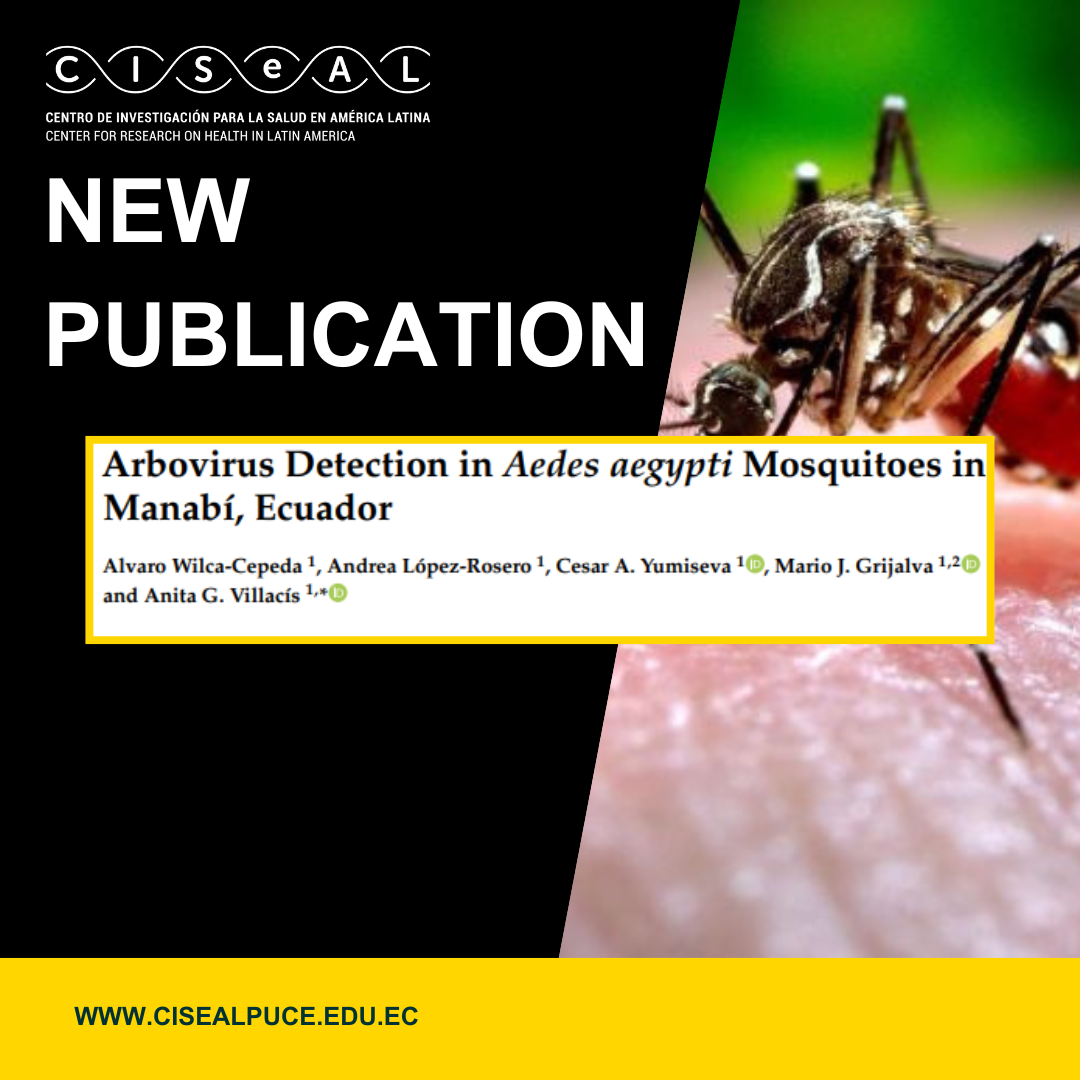 The article “Arbovirus Detection in Aedes aegypti Mosquitoes in Manabí, Ecuador” presents an investigation carried out in two communities in the province of Manabí—Caja Fuego (rural) and San Gregorio (marginal urban)—with the objective of detecting the presence of arboviruses in local populations of Aedes aegypti mosquitoes, a vector known for its role in the transmission of diseases such as dengue, Zika, and chikungunya. A total of 468 mosquitoes were collected, grouped into 72 pools, and transported under strict biosafety protocols to the laboratories of the Center for Health Research in Latin America (CISeAL), where they were processed using molecular techniques such as PCR, RT-PCR, and Sanger sequencing. This research featured the outstanding participation of Álvaro Wilca, under the direction of Dr. Anita G. Villacís, in collaboration with experts such as Dr. Mario L. Grijalva, Andréa López-Rosero, and Dr. Cesar A. Yumiseva, all of whom have significantly contributed to the study of vector-borne diseases in Ecuador.
The article “Arbovirus Detection in Aedes aegypti Mosquitoes in Manabí, Ecuador” presents an investigation carried out in two communities in the province of Manabí—Caja Fuego (rural) and San Gregorio (marginal urban)—with the objective of detecting the presence of arboviruses in local populations of Aedes aegypti mosquitoes, a vector known for its role in the transmission of diseases such as dengue, Zika, and chikungunya. A total of 468 mosquitoes were collected, grouped into 72 pools, and transported under strict biosafety protocols to the laboratories of the Center for Health Research in Latin America (CISeAL), where they were processed using molecular techniques such as PCR, RT-PCR, and Sanger sequencing. This research featured the outstanding participation of Álvaro Wilca, under the direction of Dr. Anita G. Villacís, in collaboration with experts such as Dr. Mario L. Grijalva, Andréa López-Rosero, and Dr. Cesar A. Yumiseva, all of whom have significantly contributed to the study of vector-borne diseases in Ecuador.
The results revealed the circulation of viruses belonging to the Flaviviridae and Togaviridae families, with a particularly notable finding: 18 of the 22 Flavivirus-positive pools showed the presence of dengue and Zika—the latter confirmed by sequencing in two samples—despite the fact that no official human cases of Zika had been reported in 2023. This suggests silent circulation of the virus and a potential risk of undetected outbreaks in the population, particularly in areas with poor infrastructure and limited access to health services. The study is especially relevant in the post-pandemic context of SARS-CoV-2, during which vector-borne diseases were partially sidelined from the public health agenda.
The research also highlights how factors such as climate change, human mobility, socioeconomic conditions, and the lack of effective epidemiological surveillance in marginalized areas have favored the expansion of the vector and the persistence of these viruses. In this context, an entomological surveillance campaign, in coordination with the Ministry of Public Health of Ecuador, is recommended to prevent new outbreaks, strengthen local response capacities, and improve understanding of arbovirus transmission dynamics in vulnerable regions such as Manabí. This study provides valuable data to inform public health policies and underscores the fundamental role of CISeAL in generating scientific evidence to address the country’s epidemiological challenges.
We invite you to read the full article to explore the findings in detail and their significance for the surveillance of vector-borne diseases in Ecuador:
https://www.mdpi.com/2076-0817/14/5/446



